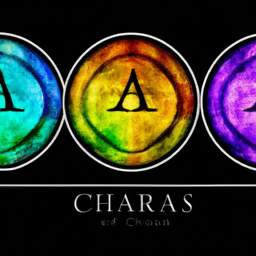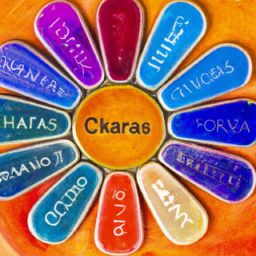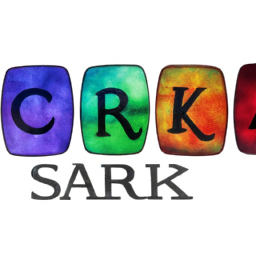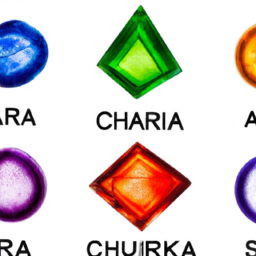
Chakras are an important concept and belief in various spiritual and philosophical traditions such as Hinduism, Buddhism, Taoism, and Jainism. The word ‘chakra’ comes from the Sanskrit language which means ‘wheel’ or ’circle’. It refers to the energy centers that are believed to exist in the human body. But have you ever wondered where did this concept of chakras actually originate from?
The Origins
The origins of chakras can be traced back to ancient Indian scriptures and texts. The earliest mention of chakras can be found in the Vedas, the oldest text in Hinduism, dating back to 1500 – 1000 BCE. In the Vedas, chakras are referred to as ‘Padma’ which means ‘lotus’ symbolizing the unfolding of the spiritual life of an individual. The concept of chakras was further developed in the Upanishads, Hindu sacred texts, around 600 BCE. The Upanishads describe chakras as the centers of spiritual power and energy in the human body.
Another influential text in the development of chakra beliefs was the Yoga Sutras of Patanjali, written around 400 CE. This text describes the six chakras as focal points for meditation and spiritual awakening. It also outlines the techniques of yoga and meditation to open and activate these chakras.
The Influence of Tantra
The concept of chakras became more prominent with the rise of Tantra in the 5th century CE. Tantra is a spiritual tradition that originated in India and focuses on the cultivation of energy for spiritual growth and enlightenment. In Tantra, the chakras are seen as the centers for the flow of energy or ‘prana’. The belief is that by opening and balancing these energy centers, one can achieve higher levels of consciousness and spiritual awakening. Tantra also introduced the concept of ’Kundalini’, a powerful divine energy that resides at the base of the spine and can be awakened through the practice of yoga, meditation, and breathing techniques.
Chakras in Buddhism
The concept of chakras also found its way into Buddhism, which originated in India around 500 BCE. In Buddhism, chakras are referred to as ‘cakka’, meaning ‘wheel’. They are believed to be the centers of energy and consciousness, similar to how they are viewed in Hinduism. However, in Buddhism, the focus is more on the psychological and philosophical rather than the physical aspects of chakras. The teachings of Buddha emphasize the importance of balancing the chakras to achieve enlightenment and inner peace.
The Role of Chakras Today
Over time, the concept of chakras has spread to various spiritual and new-age beliefs outside of the Indian subcontinent. This can be attributed to the popularity of practices like yoga, meditation, and mindfulness, which emphasize the importance of chakras and their role in achieving holistic well-being. Today, chakras are commonly associated with alternative healing methods such as Reiki, acupuncture, and crystal therapy.
In Conclusion
The origins of chakras can be traced back to ancient India and the Hindu tradition. Over time, the concept has evolved and been adapted into various spiritual and philosophical beliefs. Today, chakras continue to play a significant role in many spiritual practices and serve as a means of achieving physical, emotional, and spiritual balance and harmony. Whether you believe in chakras or not, the concept certainly invites us to explore and deepen our understanding of the mind-body-spirit connection.





“Fascinating question! I’d be interested to know why you are asking.”
HaelH50: “This is an intriguing topic, I’m very interested to learn more!”
Great question – looking forward to learning about the history of the chakra system!